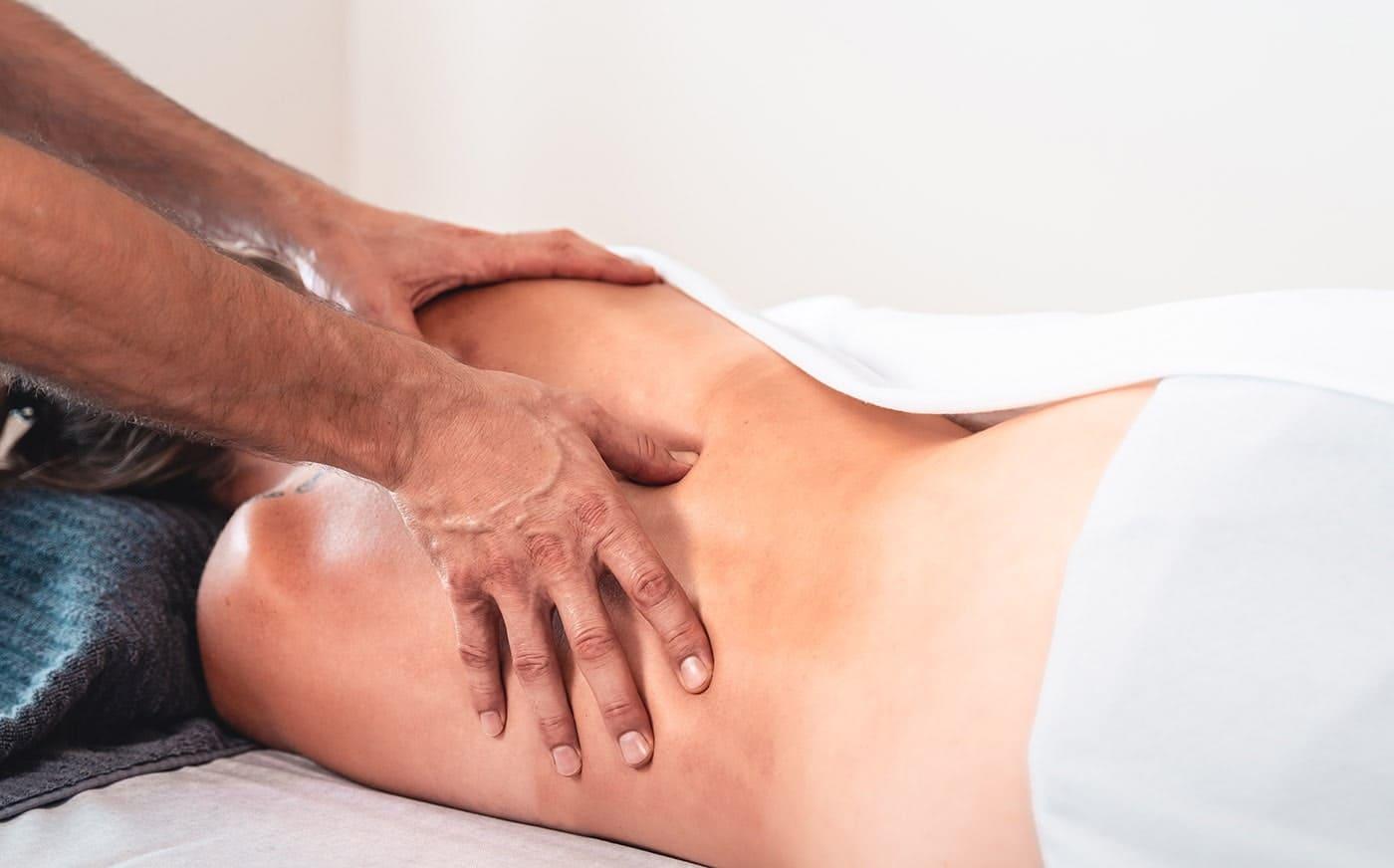Back Pain - When do I need to see a doctor?
Almost every person suffers from back pain in the course of their life. This pain can vary, from very mild to so severe that it interferes with everyday life. For mild complaints, exercise, running or yoga can often help. Of course, a massage is always a good idea as well.
But what if the intensity of pain is so high that you can no longer pursue the normal activities of everyday life? And the pain is no longer there from time to time, but occurs chronically? Or paralysis or other symptoms of failure occur with the pain? Then it’s time to consult a doctor.
What are the different types of back pain?
Specialists divide back pain into acute, subacute, and chronic back pain. In addition to this classification, a distinction is also made between simple and complicated back pain as well as alarming spinal symptoms. Examples of complicated back pain include:
- Pain caused by spinal deformities. For example, due to scoliosis, pelvic obliquity, spinal canal narrowing, bone loss (osteoporosis)
- Pain that lasts longer than six weeks = chronic back pain.
When shall I see a doctor?
Many back pains are harmless and often go away on their own. However, if the symptoms are long-lasting, so strong that they affect everyday life, or radiate into other areas of the body, then it is worthwhile to consult a doctor as soon as possible.
It is important to go to the doctor for acute back pain because you want to prevent a chronification of the pain in any case.
Since back pain is always a symptom of something underlying, it’s always worth asking yourself about the cause.
A visit to the doctor is advisable when:
- the back pain lasts longer than three days
- the symptoms occur after an accident, for example, a fall
- you experience symptoms of paralysis in the legs
- the pain occurs with fever or night sweats
- you experience numbness on the inside of the thighs or in the genital area
- incontinence occurs or you no longer have complete control over your bladder and bowel
- dizziness that comes with the pain
- you vomited and this is related to the back pain
- the pain radiates to other areas of the body
- it is a strong shooting pain
- you have had cancer in the past
- parts of the body along the spine are swollen, red, or warm
- the pain is not better after 1-2 days despite painkillers
- you have already tried many things, including massage, and the pain has not become better or even worse
Can I see my GP / family doctor for back pain?
Which doctor you can go to depends on the personal insurance model. For some models, you first have to call the insurance company, which will help you with the next steps. With other models, the family doctor must always be consulted first. As a rule, however, visiting the family doctor is the first step. If necessary, he will refer you to a specialist.
Which specialist for what pain?
- For pain caused by the musculoskeletal system (bones & muscles), the orthopedist or physiotherapist will help. A medical massage can also help with complaints of the back muscles.
- Neurosurgery is responsible for narrowing the spinal canal.
- A neurologist is needed if the cause of pain is related to the nerves.
- If the back pain is possibly caused by inflammation or an autoimmune disease, a rheumatologist may be consulted.
- Often back pain occurs psychosomatically. That means, the cause of the pain is of emotional or psychological nature. Here a psychotherapist or a certified naturopath can help.
What will happen at the doctor's?
As a rule, the family doctor will carry out an examination, which includes two to three different functional tests and various questions (if you are exposed to high stress, be sure to tell your doctor).
For example, the doctor will test your spine for pressure sensitivity. A Lasègue test can provide information about sciatica or a herniated disc. If it is one of the two, then one speaks of radicular pain. This means that the symptoms are caused by irritation of a nerve root. A radicular pain is often a radiant pain that can extend to the legs, toes, arms, and fingers. In the event of a positive Lasègue test, an MRI is prescribed to get to the bottom of the cause. You will be referred to a specialist.
If it is a local pain and there is no suspicion of nerve root compression, then the doctor will issue a prescription for physiotherapy in most cases.
In Switzerland, with a doctor’s referral, treatment by the physiotherapist is covered by the health insurance fund. However, it only applies to physiotherapy, which means that medical massages are not taken over by a medical masseur or masseuse. In order to be able to invoice medical massages from a trained medical masseuse or naturopath via your health insurance company, you need supplementary insurance. It depends on the respective supplementary insurance what percentage of the costs of the treatment are covered.
In most cases, the family doctor will also prescribe painkillers, which can relieve the symptoms in the short term. This is important so that you do not go into a protective posture, which could possibly aggravate the back pain.
What type of back pain is dangerous?
Back pain is dangerous when it occurs together with deficits such as paralysis or incontinence. If you also experience dizziness or vomit, this is also a sign that you should consult the doctor immediately.
However, one should generally be mindful of all pain that occurs in the body. For example, if lumbago remains untreated, it can get worse and worse and cause long-lasting discomfort. The longer you wait, the harder it is to treat the pain.
When is back pain classed as chronic?
Back problems can occur for many different reasons. Causes for this are often a one-sided posture and lack of exercise, which leads to muscle tension. In most cases, the reason for the pain is unknown and in many cases it goes away on its own. But sometimes the pain stays. One speaks of chronic back pain when the pain lasts longer than six to twelve weeks.
What to do in case of chronic back pain?
If you suffer from chronic back problems, this has a significant impact on your mental well-being. One hopes to be able to cure the pain and, if unknown, to understand the cause. This raises the question: Who do I contact? The family doctor? Or the medical massage therapist?
A medical massage can always help to alleviate the symptoms. In addition, the therapist carries out an anamnesis, which can often bring clarity. With chronic back pain, it often takes several massages, coupled with other modalities such as sports, to become pain-free again.
In short, for chronic back pain, it is worth contacting both, the family doctor and the medical massage therapist. Both will be able to help you. The family doctor can make a diagnosis, which brings clarity and provides you with further steps.
What can help me in addition?
In addition to a massage and a consultation with a general practitioner or expert, the following things can help:
- Exercise, such as yoga or pilates
- Heat, for example through a warming ointment, mud pack or hot water bottle
- Acupuncture
- Gymnastics
- Relaxing baths
In general, exercise is beneficial because it strengthens the back muscles.
What should I avoid with back pain?
Avoid bending down or lifting heavy things. In addition, be careful not to fall into a protective posture. This is a posture that we adopt to relieve or avoid our pain. However, since this posture is unnatural for our body, it can lead to further tension and muscle hardening.
Conclusion
Back pain is to be taken seriously. They are one of the most common diseases and most people suffer from some type of back pain during their lifetime. Many back pains go away on their own. Sports and exercise can prevent or relieve back pain. You definitely have to go to the doctor if the pain radiates to other areas of the body, if it occurs with accompanying symptoms such as fever, incontinence or vomiting or if severe acute pain does not go away after 2-3 days. The faster you take measures, the better, because this avoids a chronification of back pain.

